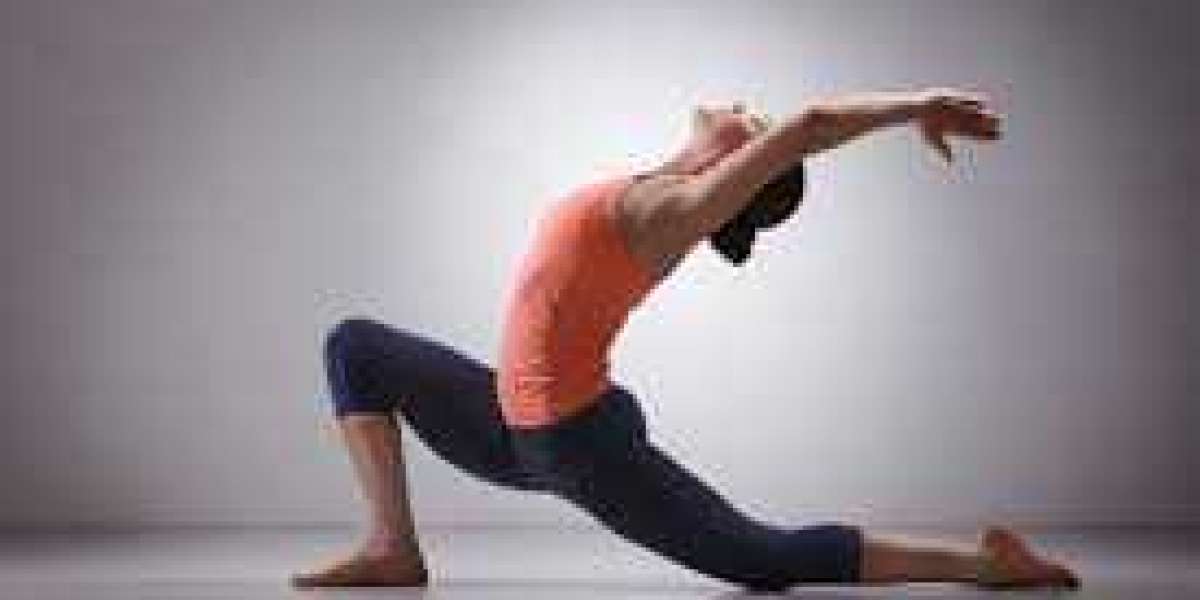Through practices like somatic yoga, many people are discovering the tremendous healing advantages of delving inward in a culture that often draws our focus outward, encouraging bustle and production. The foundation of this holistic approach is the notion that the body harbors mental and physical tensions, which frequently show themselves as pain or discomfort. Through a slow, deliberate practice that integrates the mind, body, and breath, somatic yoga aims to relieve these tensions.
This article examines the fundamentals of somatic yoga, its mechanisms, and how it might assist people in realizing the profound healing potential of their bodies.
Somatic yoga: what is it?
Somatic yoga is an approach that blends somatic movement principles with conventional yoga postures. The Greek word "soma," which refers to the body as a living, conscious creature, is where the word "somatic" originates. The focus of somatic practices is on the awareness of one's own body and internal physical perception.
In contrast to traditional yoga, which frequently emphasizes mastering specific poses or increasing flexibility, somatic yoga is centered on the inward experience of the body. In order to assist practitioners listen into their bodies, release tension, and reestablish natural movement patterns, it combines slow, deliberate movements with mindful breathing. Through the practice of somatic yoga, practitioners can reach areas of stored tension and emotional holding by learning to feel their bodies from the inside out.
Why Did Somatic Yoga Come About?
The field of somatics, which is a body-centered approach to movement that emerged from the work of several influential thinkers in the 20th century, is where somatic yoga has its roots. The term "somatics" was first used in the 1970s by the field's pioneer, Thomas Hanna, who also created Hanna Somatic Education. Previous movement techniques that enhance body awareness and function, such as the Alexander Technique and the Feldenkrais Method, had an impact on his work.
Given that both somatics and yoga seek to develop consciousness and presence in the body, a relationship between them seems inevitable. Somatic yoga emerged when numerous modern yoga instructors, motivated by Hanna's research, started incorporating somatic concepts into their practices.
The Fundamental Ideas of Somatic Yoga
Operating on multiple fundamental concepts, somatic yoga sets itself apart from other styles of yoga. Among them are:
1. Move With Awareness
Somatic yoga encourages practitioners to move gently, paying close attention to each sensation and response, in contrast to more dynamic yoga schools that emphasize flowing from one posture to the next. The goal is to use gentle, repetitive movements to let the body to naturally release tension rather of pushing or stretching it.
2. Awareness of One's Body
Somatic yoga asks practitioners to pay attention to their bodies throughout movement, emphasizing internal perception. People can identify areas of chronic tension, discomfort, or misalignment in their bodies by developing a profound awareness of how their body feels in every instant. When kids learn to modify their motions in a way that feels secure and encouraging, this awareness makes room for healing.
3. Linking Breaths
The relationship between breath and movement is emphasized in somatic yoga. Deep, mindful breathing promotes tension release, improves body awareness, and relaxes the body. Additionally, it anchors the practitioner in the here and now by acting as a bridge between the body and mind.
4. Self-Control
Working within the body's comfort zone is the main goal of somatic yoga. There is no need to endure discomfort or agony. Rather, practitioners are urged to pay attention to their bodies' signals and move in a way that is soothing and pleasurable. This encourages self-regulation, in which people discover how to pay attention to their bodies' requirements in order to control their stress and anxiety.
The Functions of Somatic Yoga
Somatic yoga has the potential to heal since it can activate the body's innate ability to heal and self-regulate. Somatic yoga helps relieve deep-seated tensions and rebalance the nervous system by encouraging attentive movement and breathing. This is how somatic yoga promotes profound healing:
1. Relaxing Your Muscles
Tension in the muscles can often be attributed to trauma, emotional strain, or bad posture. These strains have the potential to cause persistent pain, stiffness, or limited movement over time. By gradually retraining the brain and nerve system to release these tensions, somatic yoga helps people.
Small, slow, and deliberate movements are characteristic of a somatic yoga practice. The practitioner's attention combined with these gentle motions retrains the brain to release tension patterns that are habitual. Chronic pain or discomfort typically lessens as the nervous system gains the ability to relax the muscles.
2. Taking Care of Emotional Trauma
Emotional experiences are stored by the body; trauma, in particular, can become lodged in the tissues and cause discomfort or constriction. A gentle method for processing and releasing this trauma that has been buried is somatic yoga.
Through the process of raising awareness about tense regions, practitioners can start to see where they may be carrying emotional anguish.
3. Cultivating Mindfulness and Presence:
The body feels safe enough to release these deeply ingrained tendencies while moving slowly and purposefully.
Deeply contemplative is somatic yoga. It necessitates that practitioners stay in the moment with their bodies, concentrating on subtle feelings instead of outside distractions. By building a bridge between the mind and body, this mindful method cultivates a profound sense of presence and tranquility.
Regular somatic yoga practice helps the nervous system transition from fight-or-flight to rest-and-digest mode, which can eventually lower feelings of stress and anxiety. Emotional fortitude and mental clarity are enhanced by this equilibrium.
4. Replacing Organic Movement Sequences
We frequently adopt compensatory movement patterns in our daily lives to shield painful or uncomfortable places. These habits have the potential to develop into long-term problems including joint discomfort, muscular imbalances, or limited mobility.
Somatic yoga teaches the body how to move effectively and spontaneously, which helps reset these patterns. Somatic yoga practice involves slow, repetitive movements that open up new neuromuscular pathways, assisting the body in relearning how to move functionally and enhancing alignment and posture in general.
The advantages of somatic yoga
Somatic yoga has several advantages that extend to the physical and emotional domains. Among the main advantages are:
1. Chronic Pain Relief:
Somatic yoga can help relieve chronic pain issues such back pain, neck strain, and joint discomfort by treating the underlying causes of stress.
2. Enhanced Range of Motion and Flexibility:
Even for people with restricted mobility, mild somatic exercises can enhance range of motion and flexibility.
3. Emotional Healing:
By assisting in the release of emotionally held trauma, somatic yoga fosters mental health and healing.
4. Stress Reduction:
By relaxing the nervous system and lowering stress hormones, the practice promotes relaxation and a stronger sensation of serenity and wellbeing.
5. Enhanced Body Awareness:
Those who practice this approach gain a greater understanding of the feelings in their bodies, which improves their balance, coordination, and posture.
How to Begin Practicing Somatic Yoga
It's crucial to approach somatic yoga with an open mind and a desire to move slowly and thoughtfully if you're interested in giving it a try. Seeking for a licensed somatic yoga teacher or looking through internet sites that provide guided somatic yoga practices are good places to start.
Additionally, exercising patience is crucial. It takes time to create new habits and unlearn old ones in somatic yoga. The goal is long-term, sustainable change rather than quick fixes.
In summary
Somatic yoga provides a means of bridging the mind, body, and breath, making it an effective tool for healing. It offers a way to cultivate present, remove physical and mental tension, and reestablish natural movement patterns through slow, focused movements and deep awareness. Somatic yoga offers a gentle, efficient approach to well-being, whether your goal is emotional healing, pain reduction from chronic conditions, or just a stronger connection with your body.








